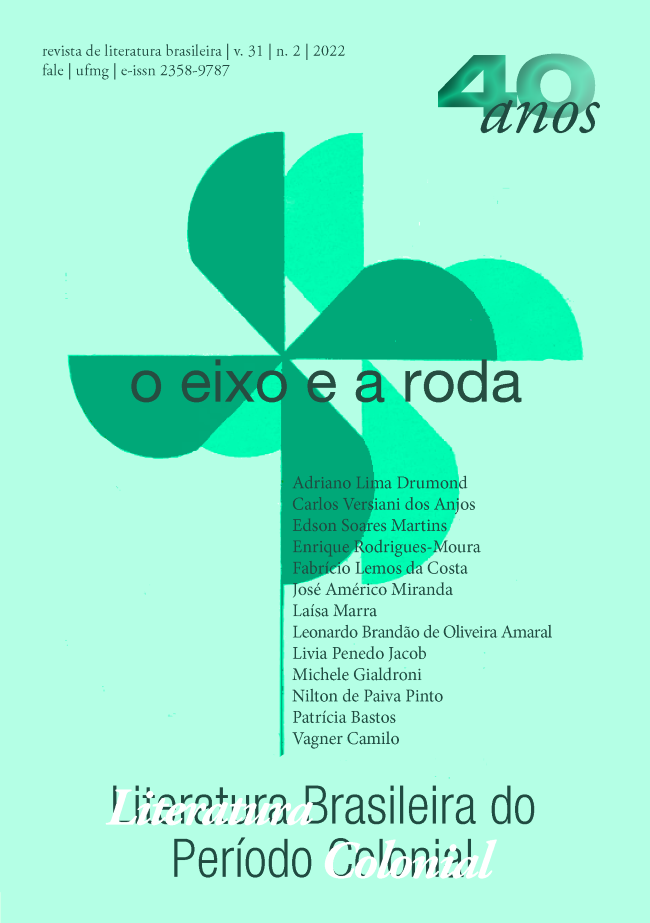O terror, a piedade e a verossimilhança
alinhamentos conceituais da tragédia grega e do fantástico
DOI:
https://doi.org/10.17851/2358-9787.31.2.175-192Keywords:
fantastic, tragedy, tragic, literary theoryAbstract
In addition to recognizing the permanent relevance of one of the pioneering works of studies aimed at the problem of literary creation, Aristotle’s Arte Poética (1993), this article sets out to explore points of interest and conceptual approaches between the theories of the fantastic and the Greek philosopher’s text. On the way to an understanding of the picture, a comparative alignment of its similarities is proposed, in order to demonstrate the recurrence and pertinence that some critical elements assume in these two different poetic traditions. In this process, three recurrent elements can be noted in the theoretical proposals and in their objects: terror, as an effect to be achieved in the receiver; pity, as a desired relationship between the interlocutor and the reality of the characters represented; and verisimilitude, as a necessary element for the realization of the two previous effects.
References
ARISTOTELES. Poética. Trad. Eudoro de Souza. São Paulo: Ars Poetica, 1993.
AUERBACH, Erich. A cicatriz de Ulisses. In: AUERBACH, Erich Mimesis: a representação da realidade na literatura ocidental. Trad. George Bernard Sperber. São Paulo: Perspectiva, 2015. p.1-20.
BAKHTIN, Mikhail. Questões de literatura e de estética: a teoria do romance. Trad. Aurora Fornoni Bernardini et al. 7. ed. São Paulo: Hucitec, 2014.
BOCAYUVA, Izabela. Sobre a catarse na tragédia grega. Anais de Filosofia Clássica, Rio de Janeiro, 2008. v. 2. no. 3. p. 46-52.
CORTÁZAR, Julio. Las puertas del cielo. In: CORTÁZAR, Julio. Bestiario. Madrid: Santillana, 2004. p.119-139.
CORTÁZAR, Julio. Valise de cronópio. São Paulo: Perspectiva, 2008.
ELIOT, Thomas. Tradition and the Individual Talent. In: ELIOT, Thomas. The Sacred Wood. Essays on Poetry and Criticism. 7. ed. Londres: Methuen & Co. Ltd., 1950.
FRYE, Northrop. Anatomy of Criticism. Princeton, New Jersey: Princeton University Press, 2000.
KAFKA, Franz. A metamorfose. Trad. Robson Soares de Medeiro. Rio de Janeiro: Anima. 1985
LOVECRAFT, Howard. The transition of Juan Romero. Donavan K. Loucks, 2009. Disponível em: http://www.hplovecraft.com/writings/texts/fiction/tjr.aspx. Acessado pela última vez no dia 05 de maio de 2020.
MONFARDINI, Adriana. O mito e a literatura. Revista Terra roxa e Outras Terras. Londrina, v. 5 p. 50-61, 2005.
POE, Edgar Allan. O gato preto. In: O gato preto e outros contos. Trad. Guilherme da Silva Braga. São Paulo: Hedra, 2008. p. 41-55.
POE, Edgar Allan. The Philosophy of Composition. Philadelphia, Pennsylvania: Graham’s Magazine, 1846. vol. XXVIII, n. 4, p. 163-167. Disponível em: https://jerrywbrown.com/wpcontent/uploads/2015/01/Edgar-Allan-Poe-The-Philosophy-of-Composition.pdf. Acessado pela última vez no dia 5 de maio de 2020.
RICŒUR, Paul. Tempo e narrativa. Trad. Claudia Berliner. São Paulo: Editora WMF Martins Fontes, 2010.
ROAS, David. A ameaça do fantástico: aproximações teóricas. Trad. Julián Fuks. São Paulo: Editora Unesp, 2014.
SANTOS, Adilson. A tragédia grega: um estudo teórico. Revista Investigações, Recife. V.18. n. 1. p. 41-67, 2005.
SÓFOCLES. Édipo Rei. Tradução por Donaldo Schüler. Rio de Janeiro: Lamparina, 2004.
STOKER, Bram. Drácula. Trad. Doris Goettems. São Paulo: Editora Landmark, 2015.
TODOROV, Tzvetan. Introdução à literatura fantástica. Trad. Maria Clara Correa Castello. São Paulo: Perspectiva, 2017.




 Esta obra está licenciada com uma Licença
Esta obra está licenciada com uma Licença 